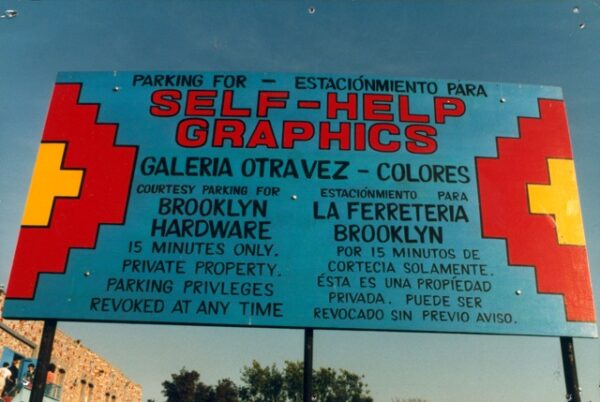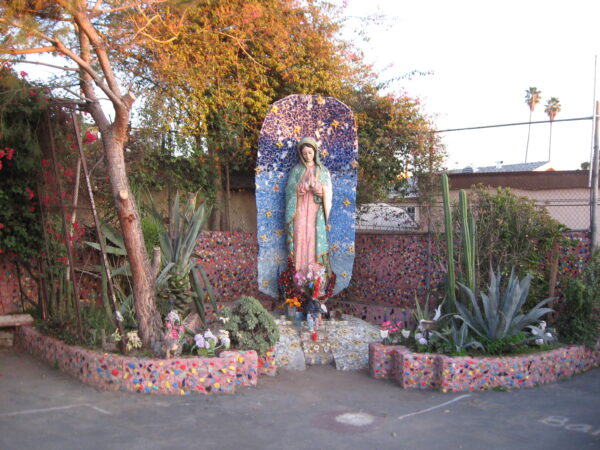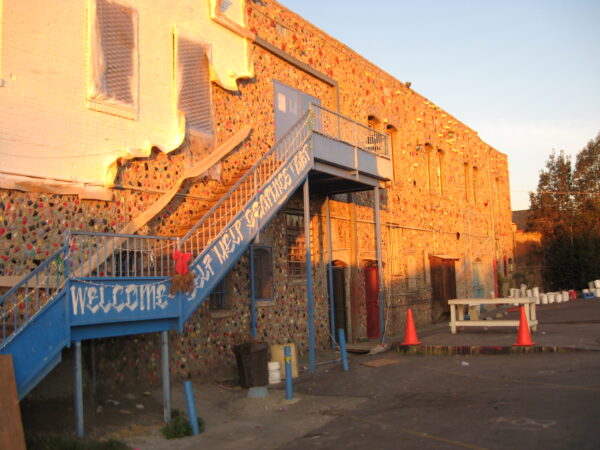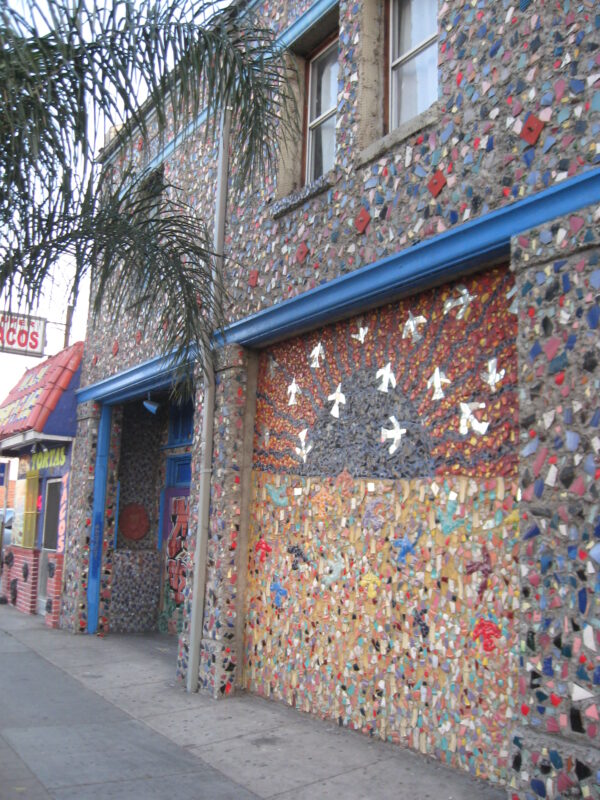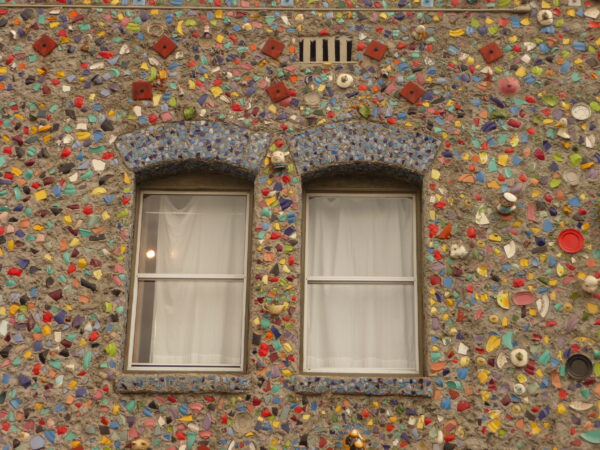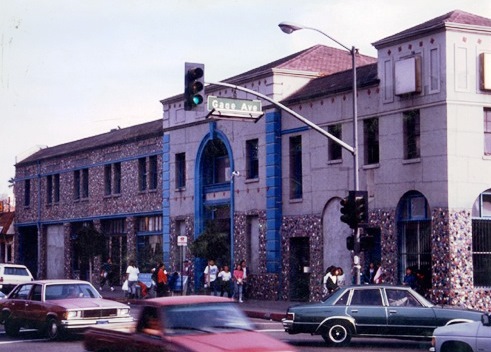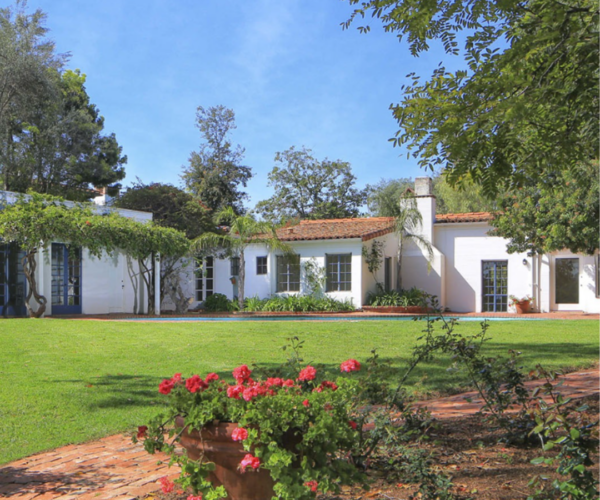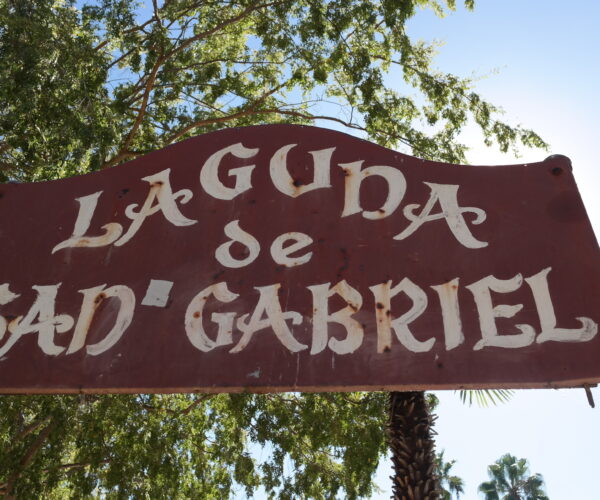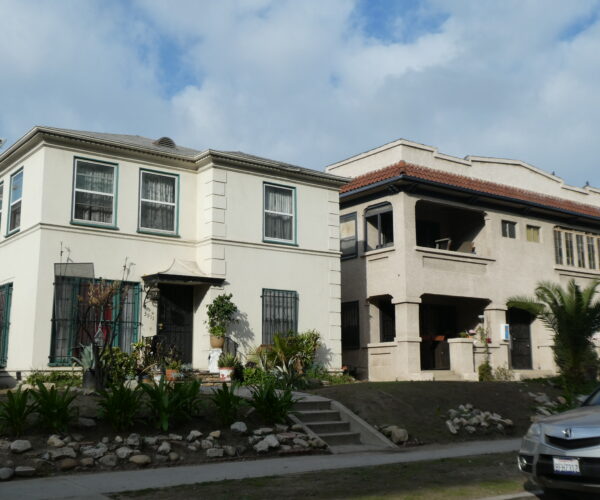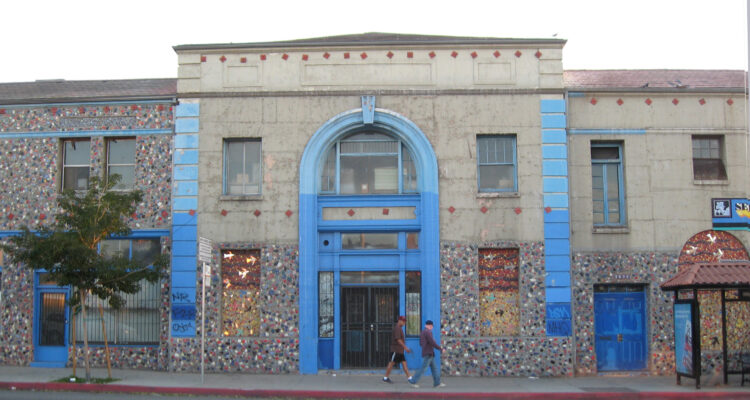
Place
Self Help Graphics & Art Building/Brooklyn State Bank California Register Nomination
Listed in 2011, this colorfully tiled two-story building located at 3800 East Cesar Chavez Avenue was home to some of East Los Angeles' most influential Chicanx organizations.
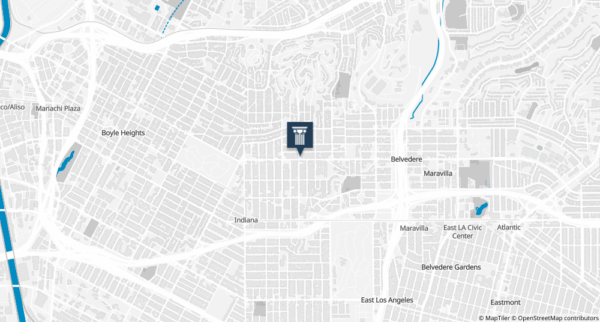

Place Details
Address
Architect
Year
Designation
Property Type
Government Officials
Community
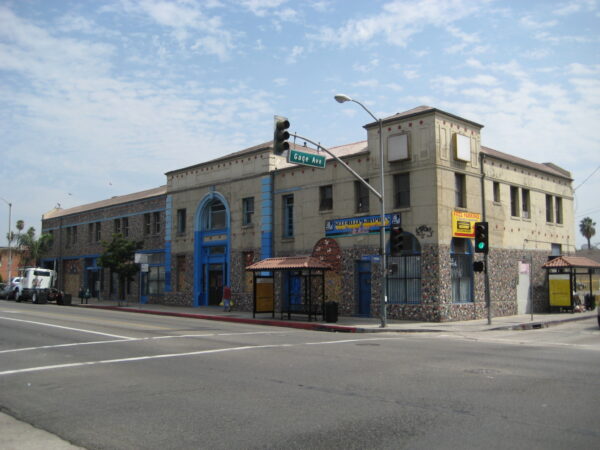
Overview
A two-story building at the corner of Cesar Chavez Avenue (formerly Brooklyn Avenue) and Gage Street served as the longtime home of Self Help Graphics & Art, a center of arts and culture for the Chicanx community in East Los Angeles. The building was sold by the Archdiocese and threatened with redevelopment in 2008.
A campaign was launched to keep the organization in the building, but eventually, it was forced to relocate in 2011 to Boyle Heights. In the same year, the Conservancy and community members successfully added the Self Help Graphics & Art building to the California Register of Historical Resources, giving it some protections and the statewide recognition that many had sought.
In 2024, Self Help Graphics & Art organization celebrated its 50th anniversary.
About This Place
About This Place
When originally designed, the building was to have four stores, a market and banking rooms on the ground floor, and a banquet hall, lodge room, offices, and apartments on the second floor. It appears the Brooklyn State Bank never occupied the building, as there is no record of it ever doing business at this location. It’s possible that either the bank never received its charter, or it failed.
In 1944, the building became the home of the Archdiocese of Los Angeles’ Catholic Youth Organization (CYO). Under the auspices of Catholic Charities, CYO is responsible for coordinating interscholastic athletics for the elementary schools of the Archdiocese of Los Angeles. CYO’s occupancy initiated the building’s historical function as a center for social and community-related uses, prompting its recognition as an important community landmark in East Los Angeles.
In the 1950s and 1960s, CYO held dances in the building featuring music by local East Los Angeles bands. Concerts and dances held at East Los Angeles College and El Monte Legion Stadium, youth centers and union halls, and at popular nightclubs like the Rhythm Room in Fullerton and the Rainbow Gardens in Pomona showcased local Chicano musicians who learned to blend Mexican and rock music into a synthesis that won them admirers both inside and outside the barrio.
Self Help Graphics & Art, an artists’ cooperative, was formed in 1970 by Franciscan nun Sister Karen Boccalero and Chicano artists Carlos Bueno and Antonio Ibanez. In the beginning, they worked out of a garage in Boyle Heights. The CYO left the building in the early 1970s; Self Help Graphics & Art took occupancy in 1979.
The beginning of Self Help Graphics and its growth as an institution were rooted in the movement for self-empowerment amongst local Chicanx students and activists. Sister Karen Boccalero’s reasons for starting the organization were: to provide training and studio space for local artists who worked in printmaking; to offer the surrounding community, including families and children, cultural experiences to instill a sense of cultural pride; and to teach local elementary school students about the value of art in their communities.
From the beginning, Self Help Graphics offered a wide range of educational workshops, cultural programs and community events, including the earliest Day of the Dead celebration in Los Angeles, Barrio Mobile Arts Studio, The Vex music venue, and numerous print Ateliers. It became a thriving cultural center for Chicanx art and culture, garnering national recognition for nurturing celebrated Chicanx artists including Gronk, Patssi Valdez and Frank Romero.
Our Position
In 2008, the building’s sale by the Archdiocese of Los Angeles to a private developer threatened the integrity of the structure, which put Eduardo Oropeza’s iconic exterior mosaic design in jeopardy of alterations. A campaign to save the building and to keep Self Help Graphics in unincorporated East Los Angeles was launched, but, eventually the nonprofit and its staff were forced to move to a new location in Boyle Heights.
The Conservancy is committed to working with Latinx communities to assist in the identification, nomination, and designation of sites important to the community and to support other community-driven heritage conservation activities. With the Conservancy’s support, the building was added to the California Register of Historical Places in 2011. This designation offers the building some protections and provides it with the statewide recognition that many in the community had sought.
